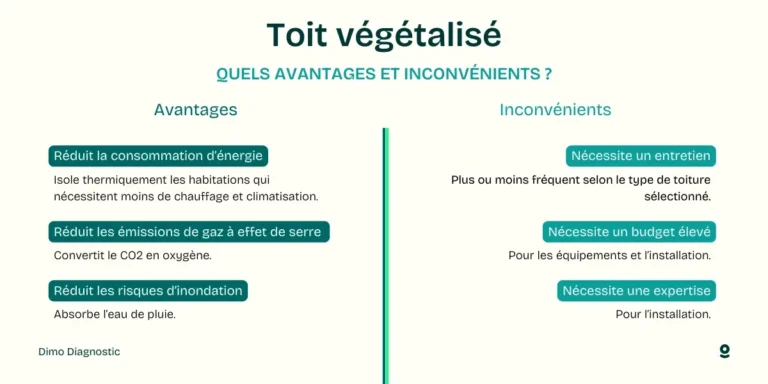We use cookies and data to ensure the proper functioning of our services. These technologies help us to monitor interruptions and protect against abuse. They are also crucial for measuring our audience’s engagement.
By analyzing the statistics of our site, we better understand the use of our services and can thus improve their quality. If you choose “Accept all,” we will also use this information to develop new services and personalize content and advertisements according to your preferences. By choosing “Reject all,” these personalized features will not be activated. To adjust your privacy settings, select “More options” and manage your preferences at any time.

The Lyon-Turin rail project evokes numerous reactions among residents of the affected regions. With long-term planning, some homeowners choose to sell their homes well before the official launch of the works. This anticipation raises several questions about the motivations and consequences of this decision.
Table of Contents
ToggleWhat are the details of the Lyon-Turin rail project?
The Lyon-Turin rail project aims to create a high-speed link between France and Italy, thereby facilitating economic and cultural exchanges. This ambitious project plans to construct new railway lines, modernized stations, and associated infrastructure. The goal is to significantly reduce travel time between the two cities while improving regional connectivity.
According to current plans, the journey should allow passengers to travel the distance between Lyon and Turin in less than three hours. This significant improvement in transport aims to attract more travelers and stimulate the economic development of the serviced areas. Moreover, the project incorporates innovative solutions regarding sustainability and energy efficiency, aligned with current environmental objectives.
The planned infrastructure also includes bridges, tunnels, and other complex structures, requiring close coordination among various stakeholders involved. Environmental impact studies and public consultations are underway to ensure that the project meets the expectations of local communities and adheres to ecological standards.
Why do homeowners decide to sell their homes now?
The decision to sell a home ten years before the start of construction may seem premature, but it is primarily motivated by the uncertainty surrounding infrastructure projects of this magnitude. Homeowners anticipate several factors influencing their choice:
- Real estate appreciation: With the announcement of the project, the value of properties located near the future railway lines may increase. Some homeowners prefer to sell before these changes occur to maximize their profit.
- Future disruptions: The construction of railway infrastructure can lead to temporary nuisances such as noise, vibrations, and restricted access. Homeowners prefer to avoid these inconveniences by selling their property in advance.
- Impact on quality of life: In the long term, changes to the urban landscape and residential areas may affect the living environment. Homeowners choose to relocate to preserve their comfort and tranquility.
Additionally, the anticipation of market developments plays a crucial role. Homeowners foresee that real estate prices could fluctuate depending on the progress of the works and infrastructure improvements. By selling early, they aim to secure a favorable transaction before local demand increases.
What are the impacts on the local real estate market?
The Lyon-Turin project has a notable impact on the local real estate market, creating both opportunities and challenges. The influx of properties put on the market by anticipatory homeowners can lead to an increase in property supply, potentially influencing prices.
In areas close to future railway lines, demand may initially decrease due to concerns about disruptions. However, as infrastructure develops, other factors such as improved transportation may attract new buyers, thus supporting property values.
Investors also see an opportunity in this context. Acquiring properties before the start of construction may prove profitable if property values increase with the progress of the project. This dynamic can stimulate the real estate market, encouraging more frequent transactions and increasing sector liquidity.
Moreover, the project may lead to urban rehabilitation, with the renovation of neighborhoods and the creation of new amenities. These improvements can make the affected areas more attractive, drawing a diverse population and promoting local economic growth.
How do residents perceive this project?
Residents’ perceptions are varied and influenced by several factors. While some view the Lyon-Turin rail project as an opportunity for development and modernization, others express concerns regarding environmental and social impacts.
Economic opportunities: Many residents are enthusiastic about the potential economic benefits, such as job creation, increased investment, and tourism stimulation. They believe the project will strengthen the region’s position as a major economic hub in Europe.
Environmental concerns: Some residents are worried about the ecological repercussions of construction, including the destruction of green spaces and associated carbon emissions. Calls are made for environmentally respectful planning and effective mitigation measures.
Quality of life: The fear of disruptions related to construction, such as noise and traffic, is also present. Residents seek assurances that the work will be carried out in a way that minimizes inconvenience and preserves their quality of life.
To address these concerns, authorities are organizing public consultations and launching initiatives to involve local communities in the decision-making process. This approach aims to create constructive dialogue and ensure that residents’ interests are considered.
What are the long-term implications for the Lyon and Turin regions?
The long-term impact of the Lyon-Turin rail project is vast and multidimensional. By facilitating better connectivity, the project can transform the economic and social dynamics of the regions traversed.
Economic development: The improvement of transport infrastructures is a catalyst for economic development. Businesses can benefit from easier access to international markets, while workers can move more easily, thus promoting professional mobility and the growth of local businesses.
Urbanization and land use planning: The project encourages thoughtful urbanization, with the creation of well-planned residential and commercial areas. This can lead to revitalization of urban centers and a reduction in congestion in overcrowded areas.
Environmental impact: By integrating sustainable technologies, the project can contribute to a reduction in carbon emissions and better resource management. The use of energy-efficient trains and optimizing routes can reduce the overall ecological footprint of rail transport.
Culture and exchanges: The railway link strengthens cultural exchanges between France and Italy, facilitating interactions between populations and encouraging better mutual understanding. This can translate into cultural diversification and increased cross-border collaborations.
What measures are being put in place to support homeowners?
In light of homeowners’ anticipations, several measures are being considered to support them throughout the sale and transition process. These initiatives aim to mitigate negative impacts and support affected residents:
- Advice and support: Real estate advisory services are available to help homeowners navigate the market, assess their property value, and optimize their sale.
- Financial aid: Grants or tax incentives may be offered to facilitate relocations and encourage real estate transactions in the region.
- Transparent information: Local authorities provide detailed information on the timeline of the works, expected impacts, and alternative solutions, ensuring clear and transparent communication with residents.
- Community support: Community initiatives are launched to strengthen social cohesion and provide emotional support to residents affected by the changes.
These measures are essential to ensure that transitions proceed smoothly and that residents feel supported throughout the process. By actively involving homeowners in decisions and providing tailored resources, the project seeks to minimize tensions and promote harmonious development.
What is the future of the Lyon-Turin rail project?
The future of the Lyon-Turin rail project remains promising despite the challenges and uncertainties encountered. Political will, financial support, and collaboration among partners are determining factors for the success of this initiative.
In the long run, the project could represent a model of modern and sustainable infrastructure, demonstrating how railway links can contribute to economic and social development while respecting environmental standards. The integrated technological innovations, such as advanced signaling systems and green energy solutions, could position this corridor as a model to follow in Europe.
Moreover, the success of this project also depends on the acceptance and commitment of local communities. By fostering an inclusive and participatory approach, leaders hope to create a sense of pride and belonging among residents, thereby reinforcing the legitimacy and sustainability of the project.
In conclusion, the Lyon-Turin rail project has the potential to profoundly transform the region, offering significant benefits while requiring careful management of social and environmental impacts. The anticipation of homeowners reflects the importance of this project and its ability to shape the future of the affected territories.















